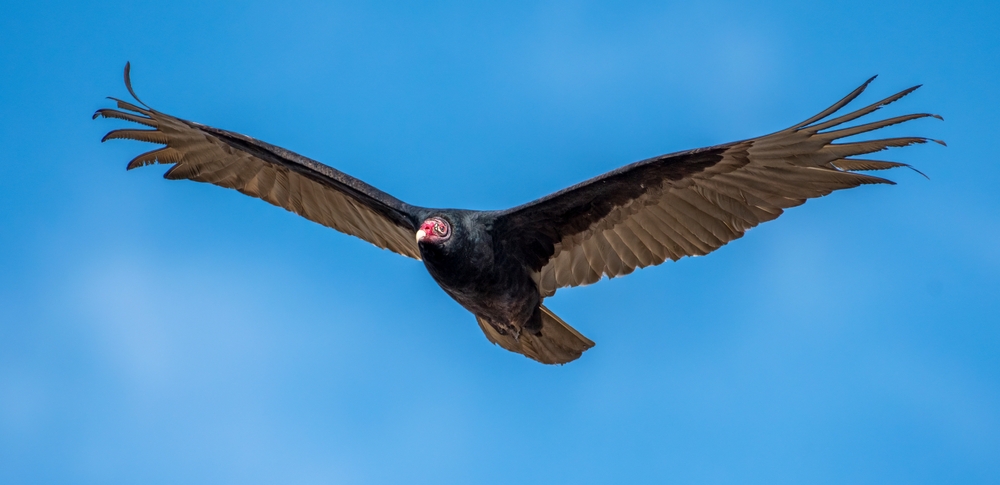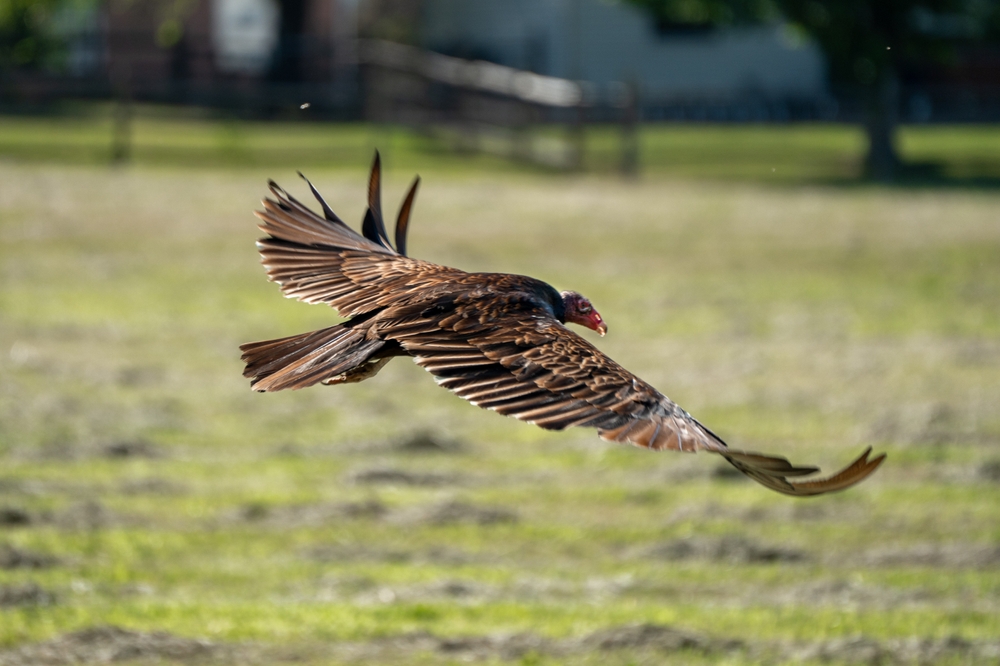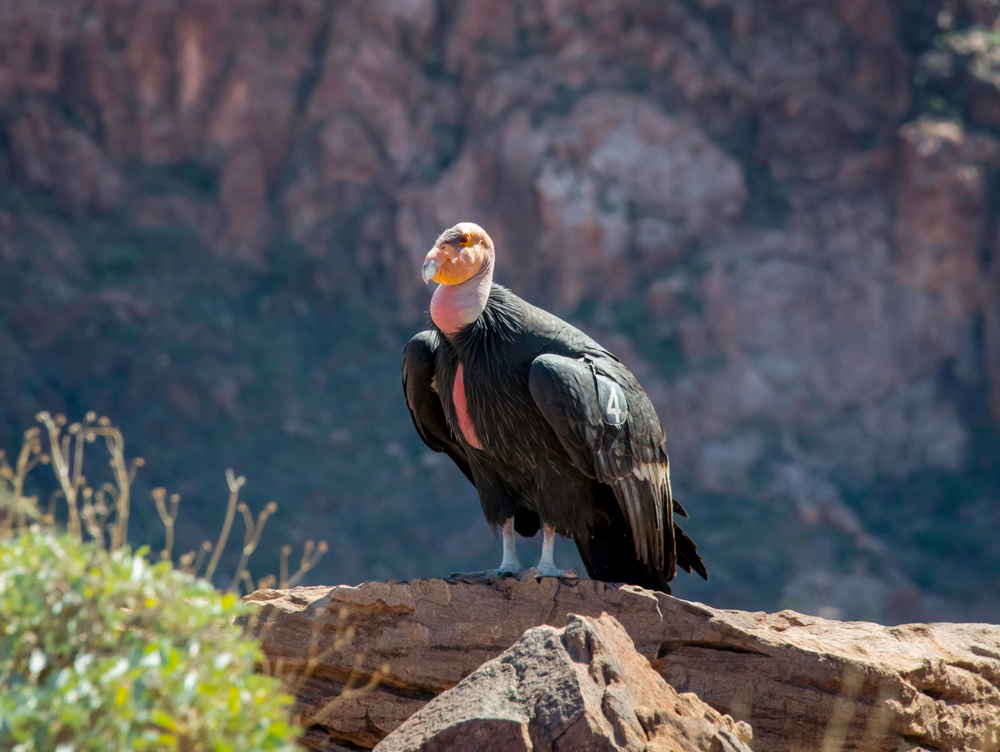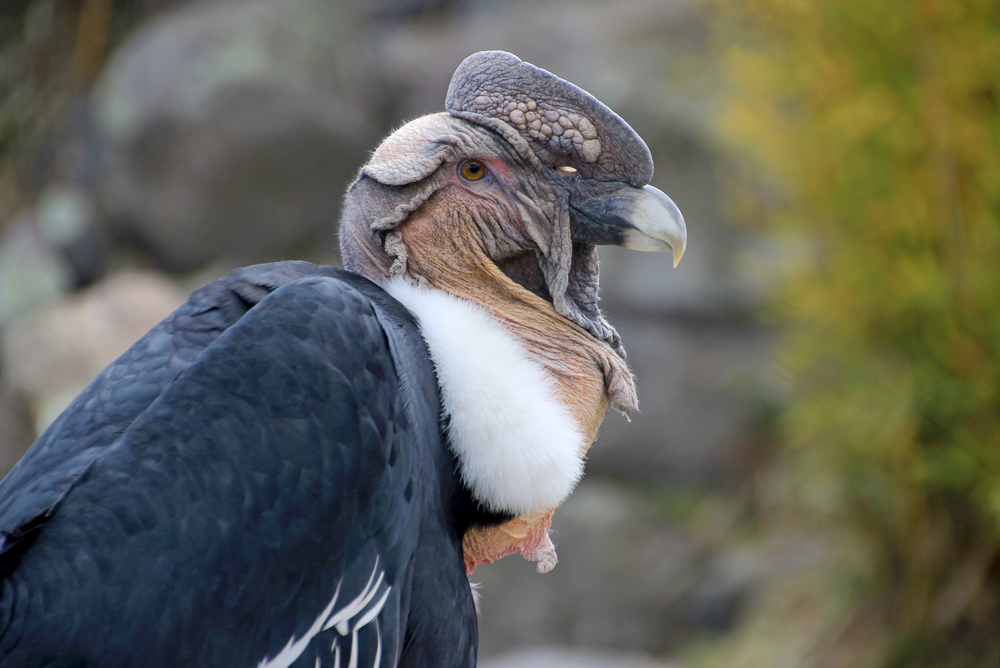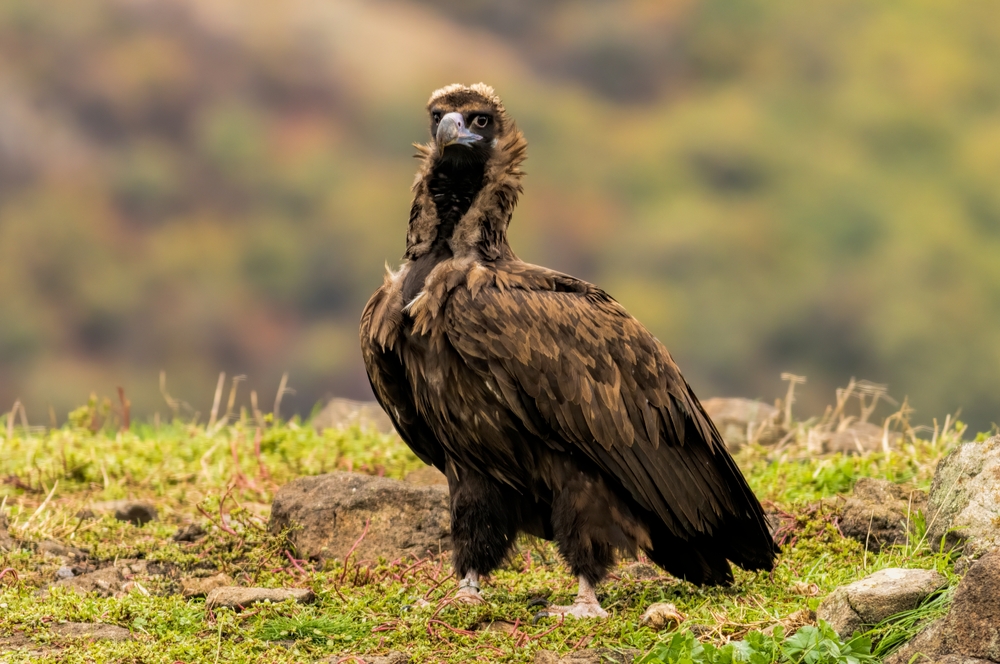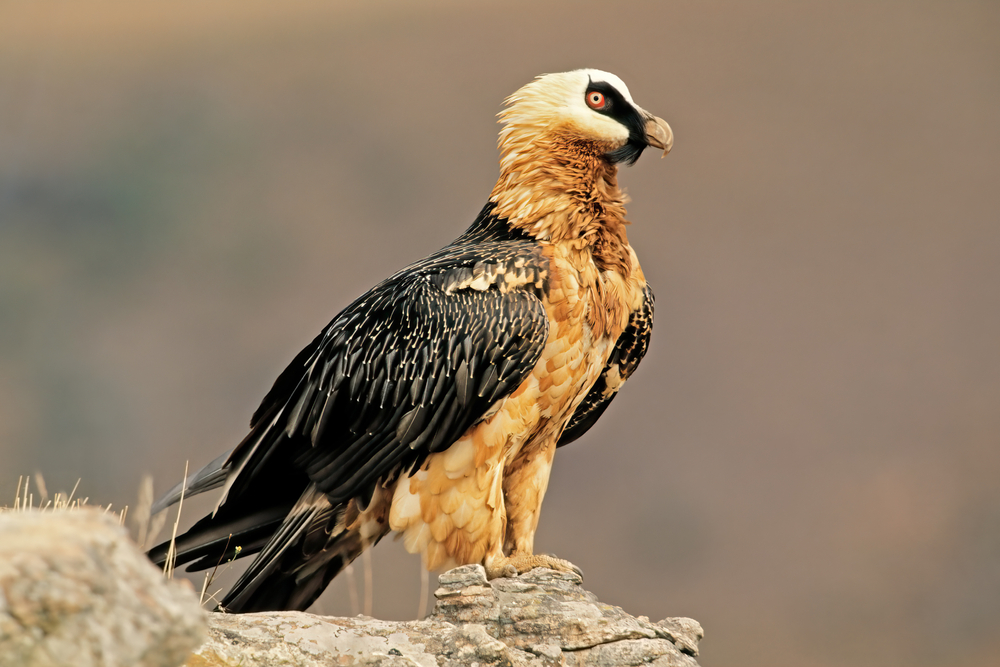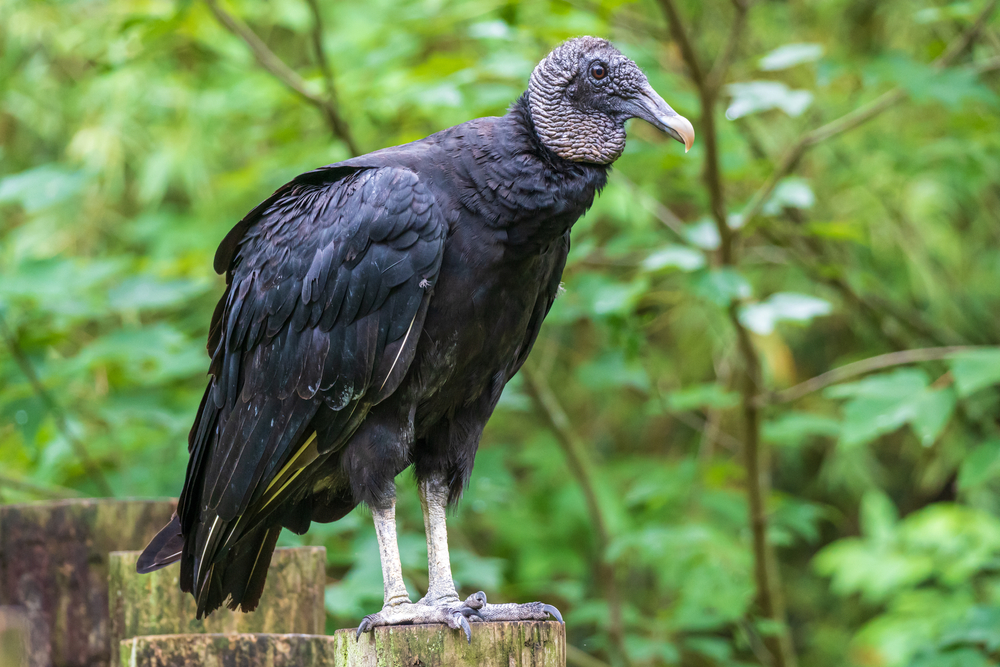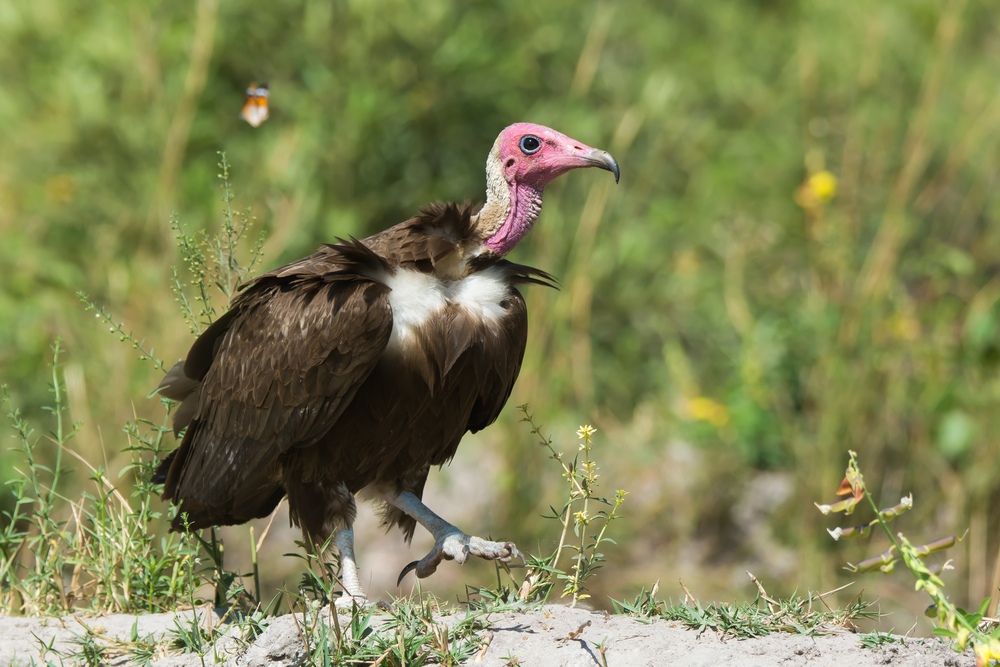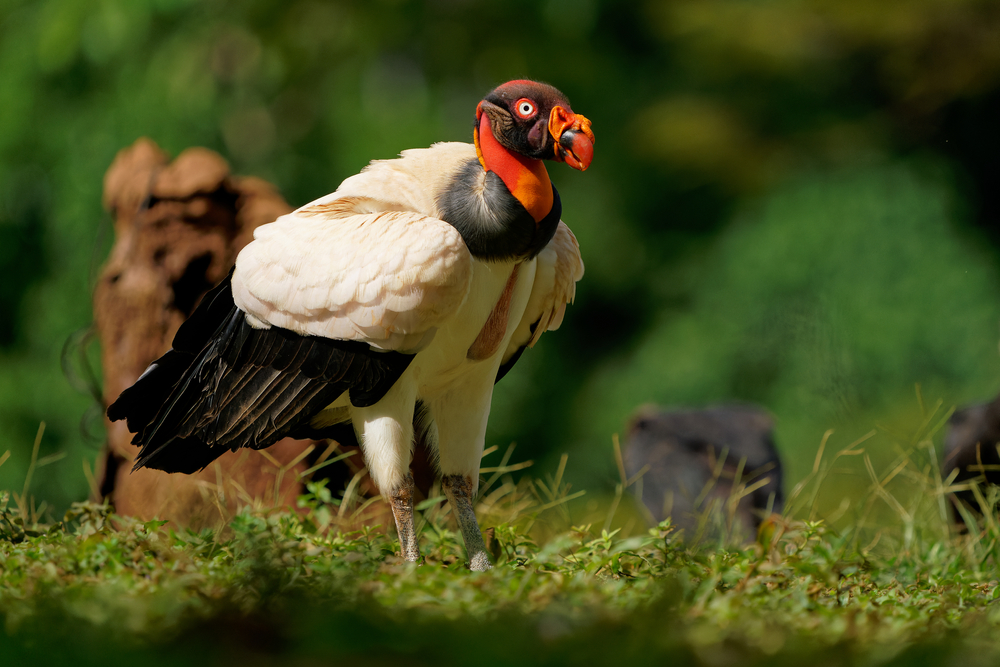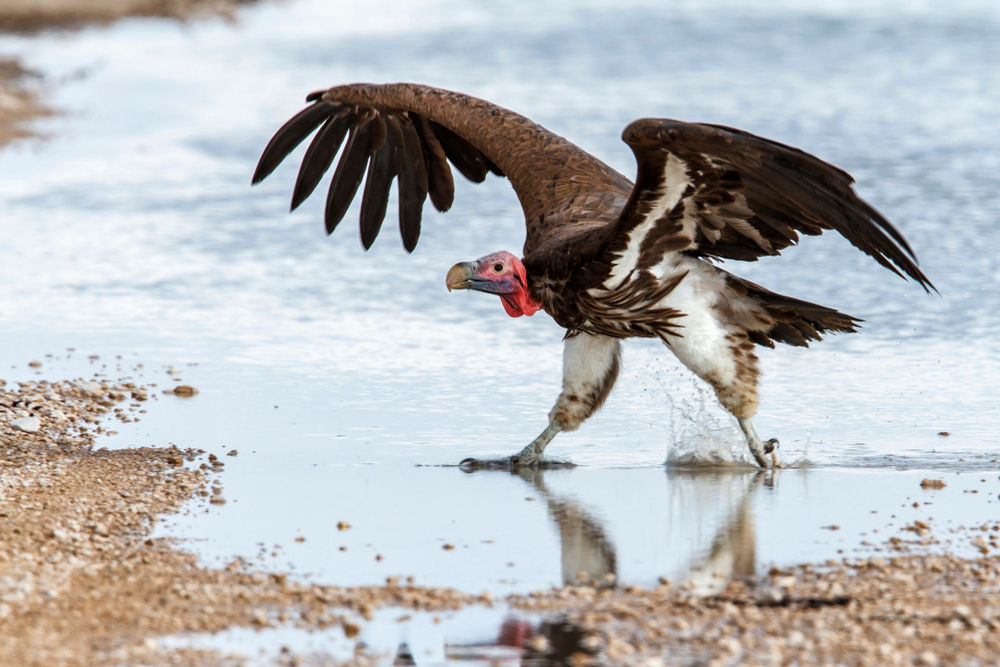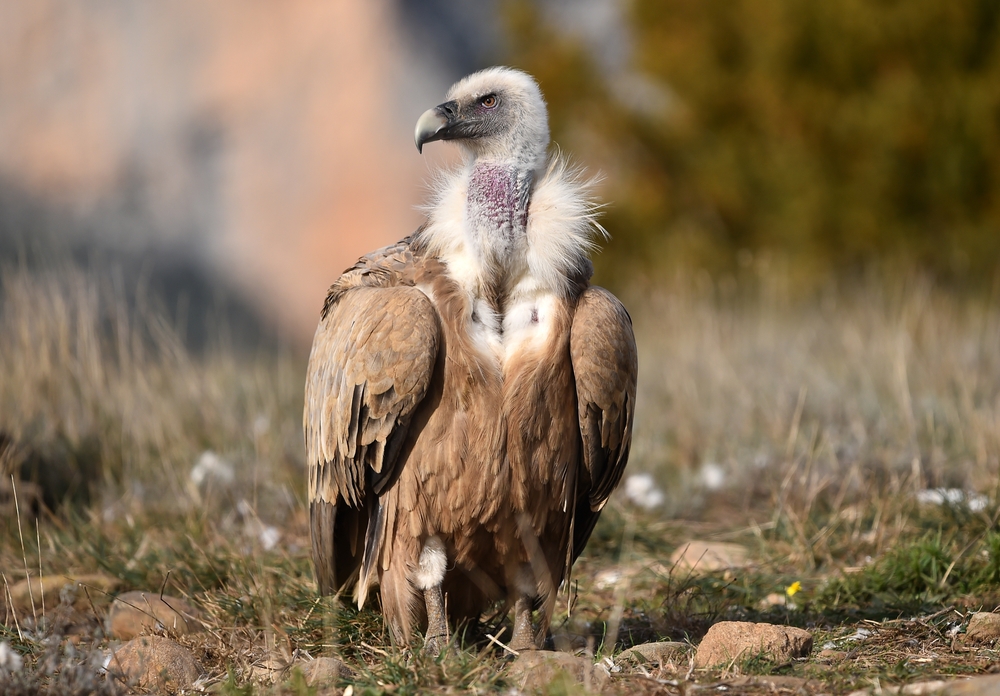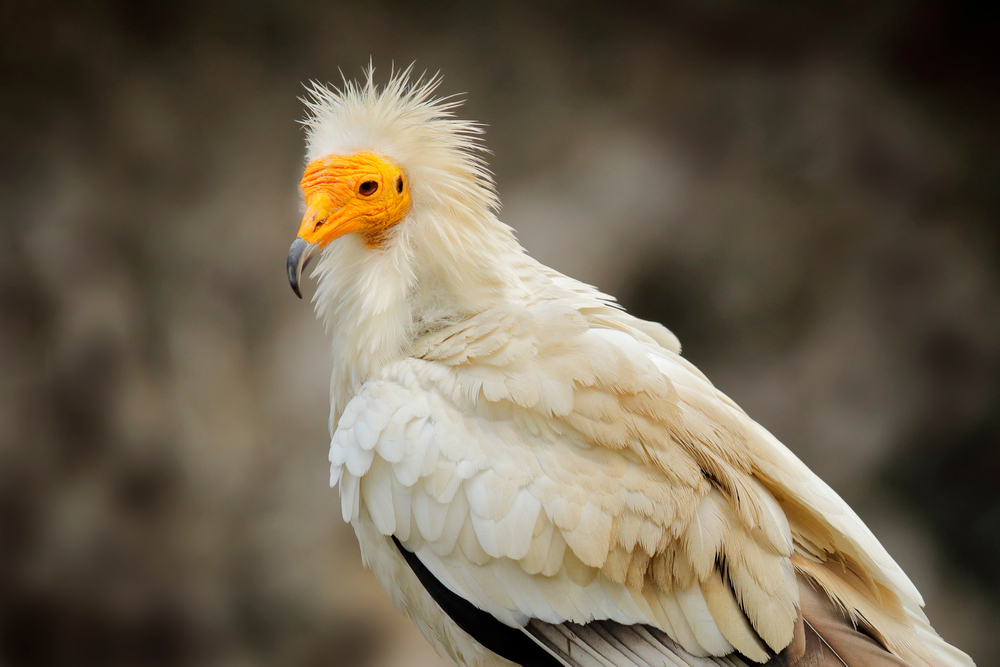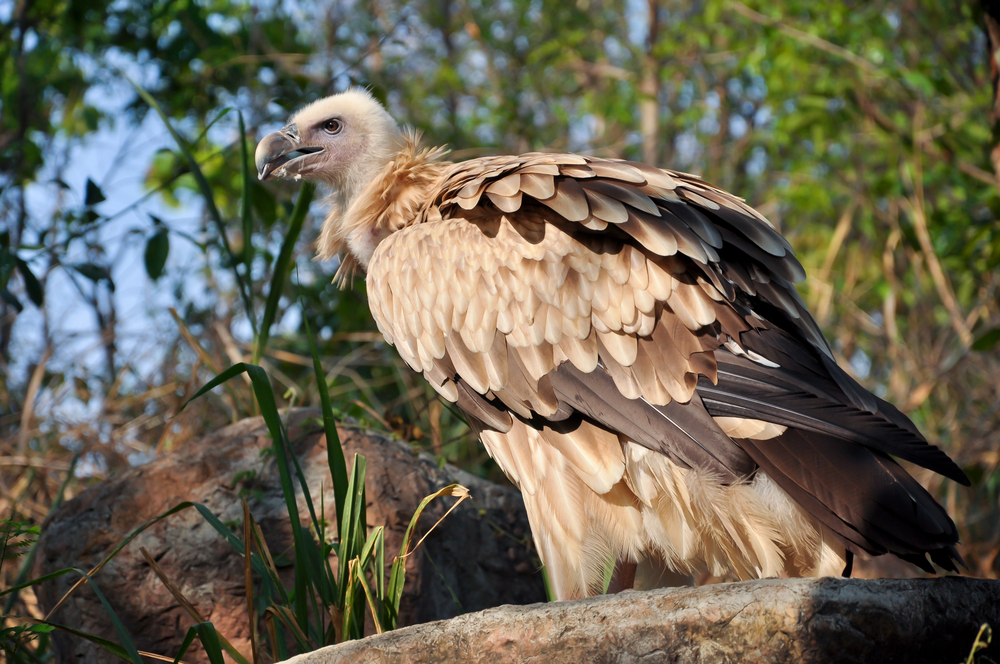The Turkey Vulture (Cathartes aura) belongs to the New World vulture family (Cathartidae). Its closest relatives are other Cathartes species, such as the Lesser Yellow-headed Vulture (C. burrovianus) and Greater Yellow-headed Vulture (C. melambrotus).
About
The Turkey Vulture (Cathartes aura), a member of the Cathartidae family, is one of the most widespread vultures in the Americas, ranging from southern Canada through much of South America. Known for its adaptability and keen sense of smell, the Turkey Vulture is a highly effective scavenger, helping maintain ecosystem health by consuming carrion before it spreads disease.
This medium-to-large vulture measures 62–81 cm (24–32 in) in length with a wingspan of 1.6–1.8 meters (5.2–5.9 ft) and weighs 1.5–2.5 kg (3–5.5 lbs). Its plumage is dark brown to black, with silvery-gray flight feathers visible in flight. The most recognizable feature is its small, featherless red head, which gives the bird a turkey-like appearance and inspired its name. Juveniles, however, have grayish-black heads.
Unlike many raptors that rely primarily on vision, the Turkey Vulture is unique among large birds in its ability to locate food using its highly developed sense of smell. It can detect the scent of decaying flesh from great distances, even beneath forest canopies, making it especially effective at finding carrion that other scavengers may miss.
Turkey Vultures rarely kill live prey, feeding almost entirely on dead animals. They often forage alone but roost and migrate in large communal groups. In flight, they are easily identified by their rocking, teetering glide as they ride thermals with minimal wingbeats.
Breeding typically occurs in sheltered sites such as caves, hollow logs, cliffs, or abandoned buildings. Rather than building a nest, the female lays 1–3 eggs directly on the ground. Both parents incubate and feed the chicks by regurgitation until the young fledge after about 2–3 months.
Highly adaptable and widespread, the Turkey Vulture remains abundant and is classified as Least Concern. It serves as a vital natural cleaner across diverse ecosystems, from deserts and grasslands to forests and urban fringes.
Physical Characteristics
Turkey Vultures are medium to large New World vultures, easily recognized by their bare red heads and graceful soaring flight:
Head and Face:
The head is small and bare of feathers, with reddish skin in adults that resembles the head of a wild turkey—hence their name. Juveniles have darker, grayish heads until maturity. The bare skin helps maintain cleanliness while feeding on carrion.
Beak:
Their beak is pale ivory in color, relatively short but sharp and hooked, well-suited for tearing softer tissues of carcasses. It is less powerful than the beak of larger vultures.
Plumage:
The body is covered in dark brown to black feathers, with lighter, silvery flight feathers that appear gray when viewed from below in flight. This contrast helps distinguish them from other large raptors.
Body and Build:
Turkey Vultures are slender compared to many vultures, with long, broad wings and a long tail that aid in soaring. They have relatively weak legs and talons since they do not capture live prey.
Size:
-
Length: 25 to 32 in (64 to 81 cm)
-
Wingspan: 5.5 to 6.6 ft (1.7 to 2 m)
-
Weight: 2 to 5 lbs (0.9 to 2.3 kg)
Turkey Vultures are built for efficiency in the air. Their light body, broad wings, and exceptional soaring ability allow them to cover great distances while searching for carrion. Their distinctive red head and steady circling flight make them one of the most recognizable vultures in the Americas.
Reproduction
The reproductive cycle of the Turkey Vulture is adapted to its wide range and scavenging lifestyle:
1. Courtship and Pair Bonding:
Turkey Vultures are monogamous and typically form long-term pair bonds. Courtship includes aerial displays, circling flights, and hopping or strutting ground displays where males spread their wings and tails.
2. Breeding Season:
Breeding occurs once per year, with timing varying by region—spring in temperate zones and earlier in tropical areas.
3. Nesting:
Turkey Vultures do not build nests. Instead, they lay eggs directly on the ground in sheltered places such as caves, hollow logs, rock crevices, abandoned buildings, or dense vegetation.
4. Egg Laying:
The female lays 1 to 3 eggs, typically whitish with brown blotches. Both parents participate in incubation.
5. Incubation:
Incubation lasts 30 to 40 days, with both male and female taking turns.
6. Chick Development:
Chicks hatch covered in white down and are altricial (helpless at birth). Both parents feed them by regurgitating carrion into their beaks.
7. Fledging and Independence:
The young fledge at about 9 to 10 weeks of age but may remain near the nest area for some time while learning to forage.
The Turkey Vulture’s flexible nesting choices and ability to raise multiple chicks each year help maintain stable populations across its wide range in the Americas.
Lifespan
The Turkey Vulture is a hardy and widespread scavenger, with survival influenced by both natural conditions and human impact.
Lifespan in the Wild:
In their natural habitats, Turkey Vultures typically live up to 16–20 years. Their survival is aided by their adaptability to diverse environments, but threats such as poisoning, collisions with vehicles, and habitat disturbance shorten life expectancy for many individuals.
Lifespan in Captivity:
In protected environments with veterinary care and steady food supplies, Turkey Vultures can live significantly longer, often reaching 30+ years.
Threats to the Turkey Vulture:
-
Poisoning: Accidental ingestion of toxins, pesticides, or poisoned carcasses intended for other animals.
-
Collisions: Vehicle strikes and electrocution from power lines are frequent causes of death.
-
Habitat Disturbance: Loss of safe nesting and roosting sites due to development.
-
Persecution: Although not as heavily targeted as some vultures, they are sometimes shot or disturbed due to misconceptions.
Turkey Vultures’ relatively long lifespan, combined with their high reproductive success and adaptability, has helped them remain one of the most abundant and widespread vultures in the Western Hemisphere.
Eating Habits
Turkey Vultures are obligate scavengers, highly specialized for finding and consuming carrion:
Diet:
They feed almost entirely on dead animals, ranging from small mammals and reptiles to large ungulates. Unlike some vultures, they rarely kill live prey, though they may eat newly hatched birds, eggs, or extremely weakened animals in scarce conditions.
Feeding Strategy:
Turkey Vultures are unique among New World vultures for their exceptional sense of smell, which allows them to detect the gases of decaying carcasses even under dense forest canopy. They soar low over landscapes, using both sight and smell to locate food.
Role at Carcasses:
They usually feed on softer tissues such as muscles and internal organs. Because their beaks are less powerful than those of larger vultures like the King or Lappet-faced Vultures, they often wait for stronger scavengers to open carcasses before feeding.
Social Behavior at Feeding Sites:
Turkey Vultures are social and often feed in groups, but they are not dominant. At carcasses, they frequently yield to more aggressive species, taking turns once larger scavengers are done.
Feeding Technique:
They insert their heads deep into carcasses, a behavior made cleaner by their featherless red heads, which prevent contamination. They feed cautiously but persistently, often returning repeatedly to a carcass until it is consumed.
Turkey Vultures’ reliance on smell and their ability to exploit carcasses in dense forests give them an ecological role distinct from many other vultures, making them one of the most adaptable scavengers in the Americas.
Uniqueness
The Turkey Vulture (Cathartes aura) is one of the most widespread and distinctive New World vultures, with several features that set it apart from other scavengers:
Exceptional Sense of Smell:
Unlike most birds, Turkey Vultures possess a highly developed sense of smell. They can detect the scent of ethyl mercaptan—a gas released by decaying animals—from great distances, allowing them to locate carrion hidden beneath dense forest canopies.
Graceful Soaring:
They are among the most efficient soaring birds, riding thermals with minimal wing flapping. Their light bodies and long wings enable them to travel vast distances while conserving energy.
Characteristic Appearance:
Their small, featherless red head resembles that of a wild turkey, giving the species its name. Juveniles have grayish heads until they mature.
Widespread Distribution:
The Turkey Vulture is found from southern Canada to the southern tip of South America, making it one of the most widely distributed vulture species in the world.
Thermoregulatory Behavior:
Turkey Vultures cool themselves through urohydrosis—defecating on their legs, which evaporates to lower body temperature and helps maintain hygiene.
Defensive Strategy:
When threatened, they regurgitate partially digested carrion. This foul-smelling defense both deters predators and lightens their bodies for a quick escape.
Ecological Role:
By consuming carrion that might otherwise spread disease, Turkey Vultures serve as vital cleaners of ecosystems across the Americas.
The Turkey Vulture’s combination of a keen sense of smell, widespread range, and unusual behaviors make it one of the most distinctive and successful scavengers on Earth.
Be the First to Share Photos of This Species.
FAQ’s
1. What species is closest to the Turkey Vulture?
2. How does the Turkey Vulture compare to other vultures?
Turkey Vultures are medium-sized compared to giants like the Andean Condor or Lappet-faced Vulture. They are unique in relying heavily on smell—an ability most vultures lack. They are less aggressive at carcasses, often feeding after larger, stronger vultures have opened the hide. Their soaring grace and adaptability allow them to thrive across the widest range of any vulture.
3. What national parks provide the best opportunity to see a Turkey Vulture?
Turkey Vultures are widespread across the Americas, and they are commonly seen in many national parks, including:
-
Grand Canyon National Park, USA
-
Everglades National Park, USA
-
Torres del Paine National Park, Chile
-
Iguaçu National Park, Brazil/Argentina
-
Yellowstone National Park, USA
Their wide distribution and habit of soaring in open skies make them one of the easiest vultures to spot in the wild.



































































